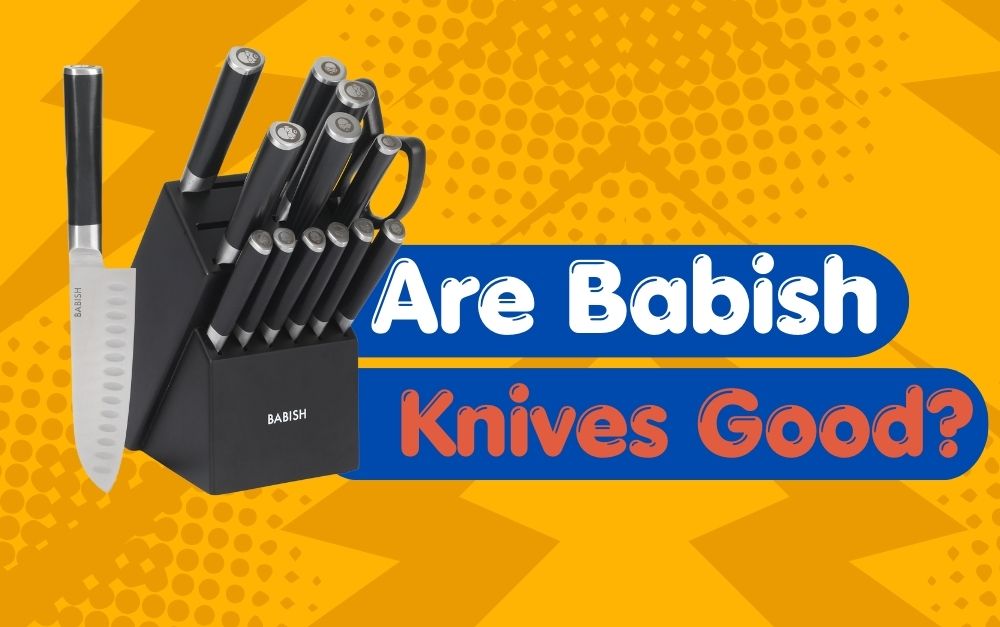When you buy a new kitchen knife, you probably focus a lot on the blade’s sharpness, right? But have you ever stopped to think about how you store and protect it? If not, you’re not alone.
Many people don’t realize that a simple knife sheath can make a big difference.Even it’s different how well your knife performs over time. It not only keeps the blade sharp but also ensures that you stay safe while handling it.
Let’s take a look at why a knife sheath is important and how you can use it properly to make your knives last longer and keep yourself safe in the kitchen.
What is a Knife Sheath?
A knife sheath is a cover that fits over the blade of your knife. It keeps the sharp edge protected, so it doesn’t get damaged when you’re not using it. A sheath can also keep you from accidentally cutting yourself when you reach for the knife. Knife sheaths come in different materials, like leather or plastic, and they fit snugly around the blade to protect it.
Why Should You Use a Knife Sheath?
It might seem like a knife sheath is just an extra thing to deal with, but it really does matter. Sheaths also prevent accidental injuries. (Accourding to Crate Club’s guide). Here’s why:
- Protects Your Knife: The sheath keeps the blade safe from scratches, nicks, and other damage. This helps your knife stay sharp longer.
- Keeps You Safe: Handling a knife without a sheath can be risky, especially when you’re reaching for it in a drawer. The sheath prevents accidental cuts by covering the sharp edge.
- Helps with Storage: Knives can easily get damaged if they’re just tossed into a drawer with other utensils. A sheath protects the blade and keeps the knife in good condition when stored.
How to Use a Knife Sheath Properly
Now that we know why a knife sheath is so important, let’s talk about how to use it correctly.
Step 1: Make Sure the Sheath Fits
When you get your knife, the first thing you need to check is whether the sheath fits properly. It should cover the blade snugly but not be too tight. If the sheath is too tight, it might be hard to get the knife in and out. If it’s too loose, the knife might fall out and get damaged.
For example, if you have a leather sheath, it may stretch a bit over time, but at first, it should fit tightly enough to stay in place.
Step 2: Store the Knife Safely
Once your knife is in its sheath, the next step is storing it safely. If you’re keeping it in a drawer, use a knife organizer to separate it from other utensils. This way, the sheath stays in place and the blade doesn’t get scratched or damaged. If you store the knife in a knife block, make sure the sheath stays on so the blade remains protected.
It’s also a good idea to avoid storing knives in places with high humidity, as moisture can cause rust on the blade.
Step 3: Clean the Sheath
It’s easy to forget about the sheath, but it’s important to keep it clean. Food particles or moisture can build up, and that can damage both the knife and the sheath over time. For leather sheaths, wipe them with a dry cloth and condition them every now and then. For plastic or synthetic sheaths, check them regularly for cracks or wear. If the sheath gets damaged, replace it.
Step 4: Always Sheath the Knife When Not in Use
This is probably the most important tip. Whenever you’re not using your knife, make sure to put it back in the sheath. Even if you’re just taking a quick break, the knife should be sheathed. This small habit keeps the knife safe and avoids accidental cuts when you reach for it.
Step 5: Never Force the Knife into the Sheath
If the knife doesn’t fit easily into the sheath, don’t force it. Forcing the knife in could cause damage to both the blade and the sheath. Instead, check for any dirt or obstructions inside the sheath. If everything looks good and the knife still won’t fit, you might need a different sheath.
3 Common Mistakes to Avoid using sheath
While using a knife sheath is easy, there are a few mistakes to keep in mind:
- Leaving the Knife Out of the Sheath: Always put the knife back in the sheath when you’re done using it. Leaving it out increases the risk of injury and can lead to damage.
- Using the Wrong Sheath: Not all sheaths are created equal. Make sure your sheath fits the size and shape of your knife to ensure proper protection.
- Not Maintaining the Sheath: Clean your sheath regularly and replace it if it shows signs of wear and tear.
Conclusion
Using a knife sheath may seem like a small thing, but it’s an important step in keeping your knives sharp, safe, and in good condition. It only takes a few extra seconds to sheath your knife after you use it, but it can make a big difference in both your knife’s longevity and your safety in the kitchen. So, make it a habit to use your knife sheath properly, and your knives will thank you for it!
FAQs
- How do I know if my knife fits in the sheath?
The sheath should fit snugly but not be too tight. The knife should slide in and out easily, without any struggle. - Can I use any sheath for my knife?
It’s best to use a sheath made for your specific knife. The sheath should match the size and shape of your knife for the best protection. - How do I clean a leather sheath?
Simply wipe it with a dry cloth. You can also condition it with a leather care product to keep it soft and in good condition. - Is it okay to store a knife without its sheath?
It’s safer to store your knife in its sheath whenever it’s not in use. This prevents accidents and protects the blade. - Can a sheath damage my knife?
A properly fitted sheath will not damage your knife. Just make sure the sheath is clean and in good condition, and it should protect the blade well.



